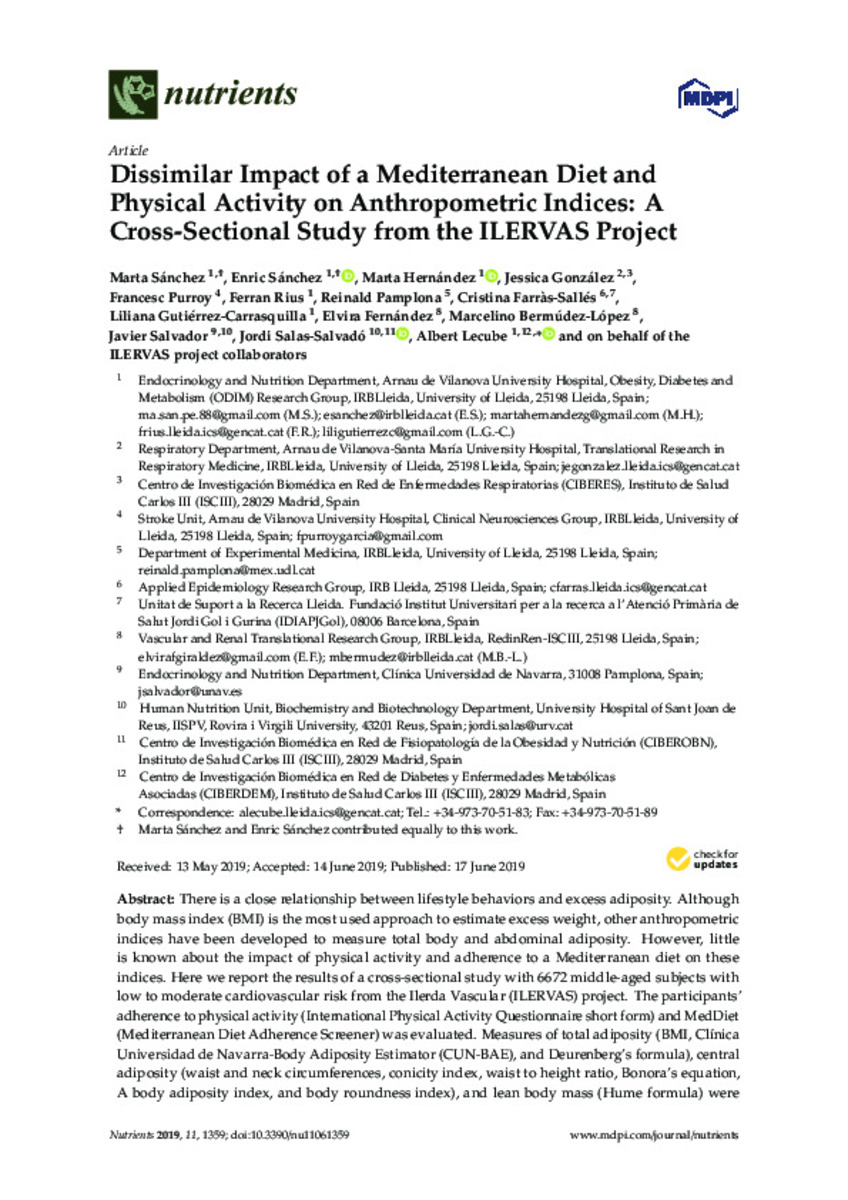Dissimilar Impact of a Mediterranean Diet and Physical Activity on Anthropometric Indices: A Cross-Sectional Study from the ILERVAS Project
Keywords:
Materias Investigacion::Ciencias de la Salud::Endocrinología
Mediterranean diet
Adiposity
Body fat
Obesity indices
Physical activity
Questionnaire
Note:
This article is an open access article distributed under the terms and conditions of the Creative Commons Attribution (CC BY) license (http://creativecommons.org/licenses/by/4.0/).
Citation:
Sánchez, M. (Marta); Sánchez, E. (Enric); Hernandez, M. (Marta); et al. "Dissimilar Impact of a Mediterranean Diet and Physical Activity on Anthropometric Indices: A Cross-Sectional Study from the ILERVAS Project". Nutrients. 11 (1359), 2019, 1 - 14
Statistics and impact
0 citas en

0 citas en

Items in Dadun are protected by copyright, with all rights reserved, unless otherwise indicated.








